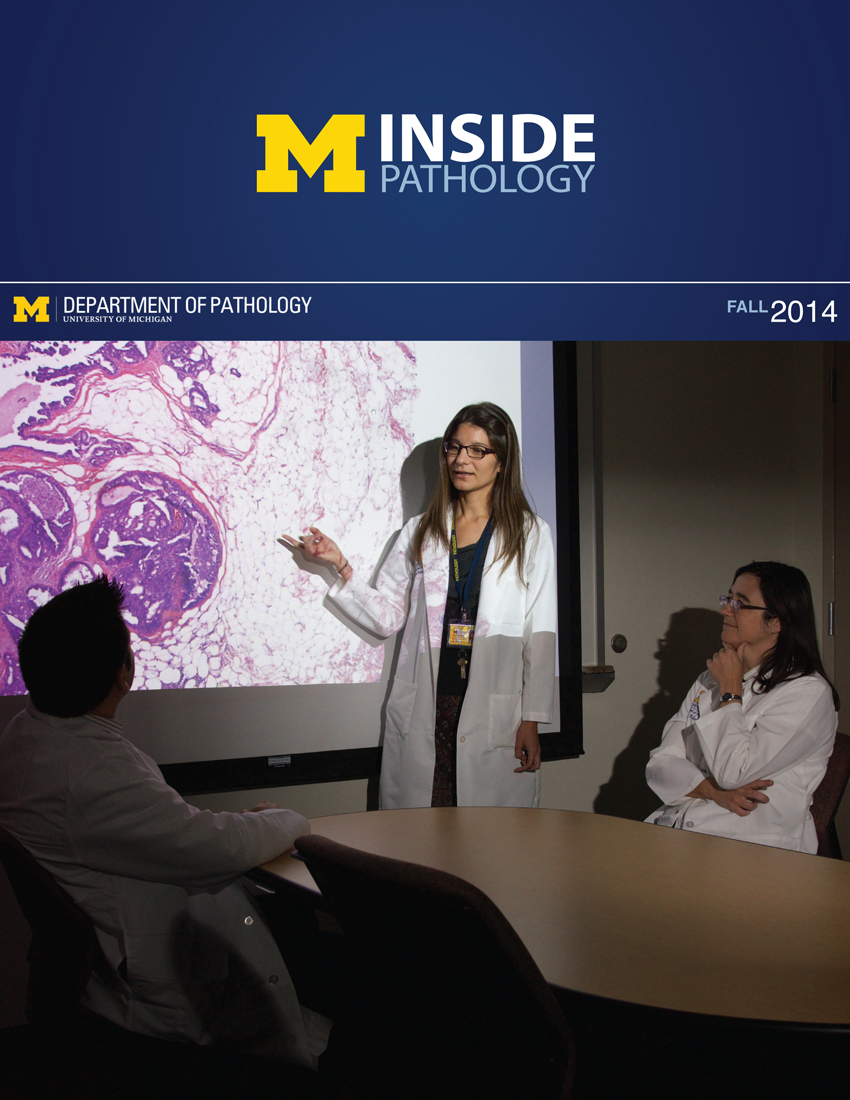Research By Dr. Hristov Published in Journal of Cutaneous Pathology
By Camren Clouthier | October 1 2020New research from the Department of Pathology and Dr. Alexandra Hristov was just published in the Journal of Cutaneous Pathology. The study focuses on the kappa and lambda immunohistochemistry in situ hybridization of atypical cutaneous lymphoid infiltrates.
Initially, sixty-three articles assessing kappa and lambda IHC and/or ISH were originally identified. Most focused on marginal zone lymphomas. Other lymphoma types included follicle center lymphoma, diffuse large B-cell lymphoma, chronic lymphocytic leukemia/small lymphocytic lymphoma, mantle cell lymphoma, lymphoplasmacytic lymphoma, plasmablastic lymphoma, multiple myeloma, monoclonal gammopathy of undetermined significance, and polyneuropathy, organomegaly, endocrinopathy, monoclonal protein and skin changes (POEMS). Non-neoplastic lesions included reactive lymphoid hyperplasia, cutaneous plasmacytosis, connective tissue disease, IgG4-related disease, acrodermatitis chronic atrophicans, Zoon balanitis, dermatitides, and infiltrates around epithelial dysplasias/neoplasias.
 Dr. Hristov notes, "our article was written as part of the Appropriate Use Committee (AUC) of the American Society of Dermatopathology. The goal of this committee is to provide guidance to practicing dermatopathologists on the appropriate use of ancillary studies in patient care with the goal of improving care and decreasing cost."
Dr. Hristov notes, "our article was written as part of the Appropriate Use Committee (AUC) of the American Society of Dermatopathology. The goal of this committee is to provide guidance to practicing dermatopathologists on the appropriate use of ancillary studies in patient care with the goal of improving care and decreasing cost."
Conclusively, the study determined that kappa and lambda IHC and ISH are useful tools in the evaluation of cutaneous B-cell lymphomas and plasma cell neoplasms. The literature supports that the detection of light-chain restriction by IHC and ISH is one of the most useful findings in the differential diagnosis of reactive lymphoid hyperplasia vs B-cell lymphoma with plasmacytic differentiation.
--
The full publication in the Journal of Cutaneous Pathology is accessible here.
 ON THE COVER
ON THE COVER
 ON THE COVER
ON THE COVER
 ON THE COVER
ON THE COVER
 ON THE COVER
ON THE COVER
 ON THE COVER
ON THE COVER
 ON THE COVER
ON THE COVER
 ON THE COVER
ON THE COVER
 ON THE COVER
ON THE COVER
 ON THE COVER
ON THE COVER
 ON THE COVER
ON THE COVER
 ON THE COVER
ON THE COVER
